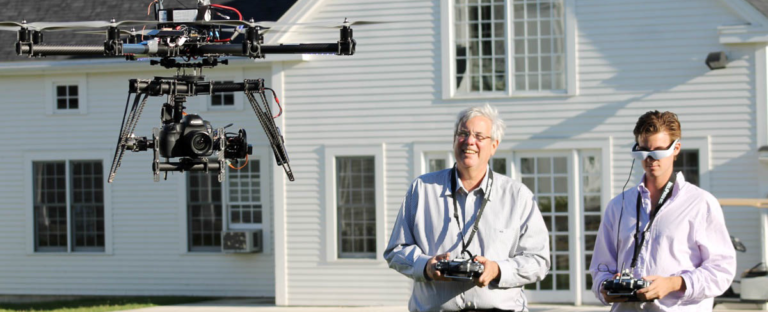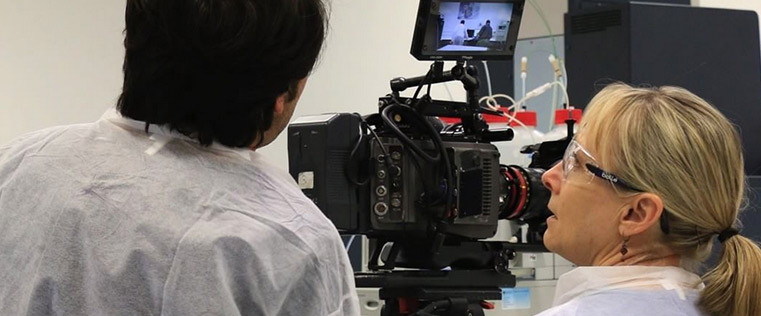Behind the Scenes: How a Live Video Streaming Event is Created
by Ted Canova
“Ready camera 2.”
It’s Tuesday morning at the Hynes Convention Center in Boston and we’re closing in on a worldwide presentation.
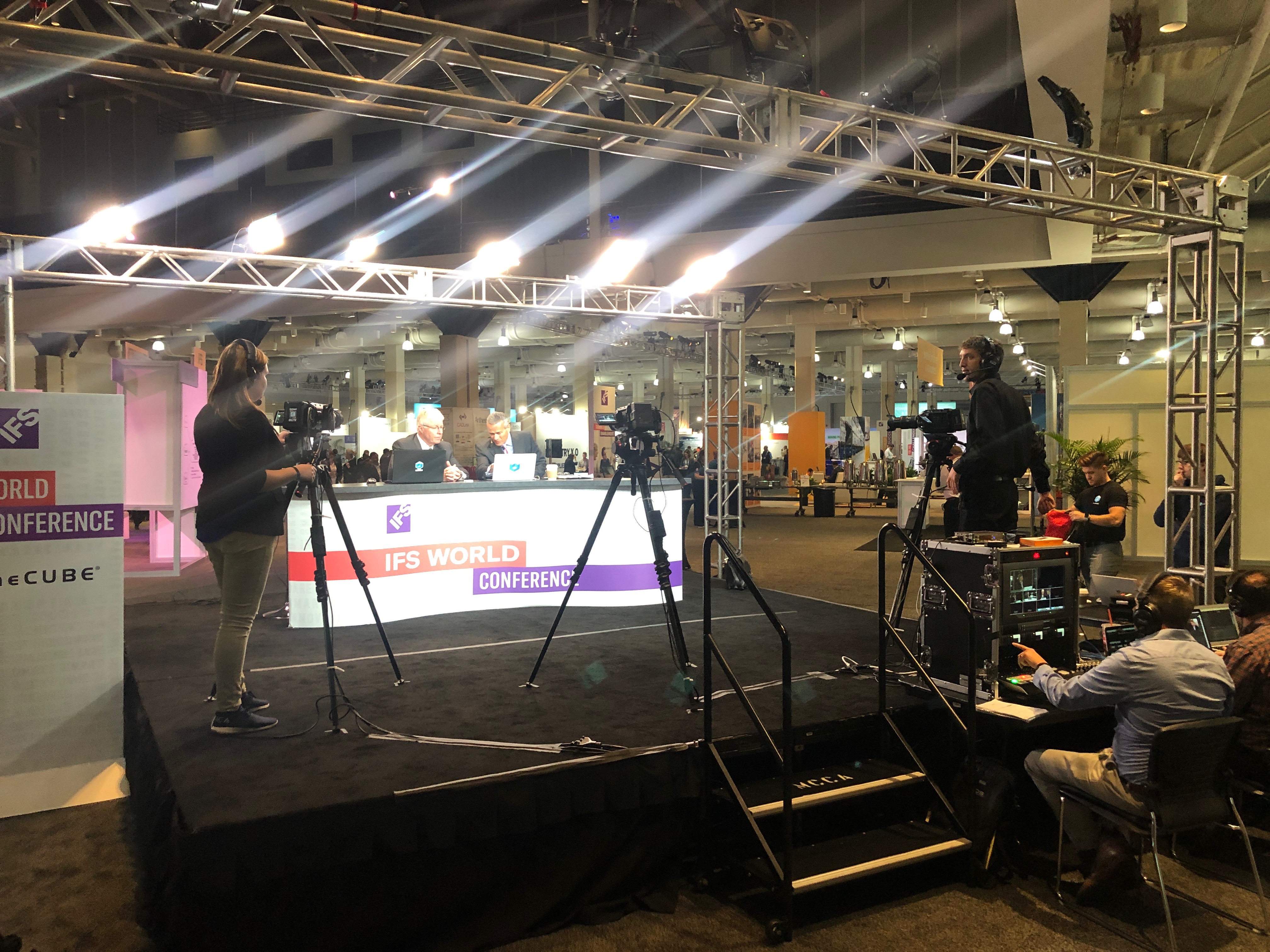
“We’re rolling.”
The crew at DigiNovations is minutes away from live streaming the IFS World Conference with some of the biggest tech firms looking on.
“30 seconds to open.”
On a square riser sits a television news set, a lighting truss and three cameras. Two on-camera hosts welcome a guest who’s a mover-and-shaker in the tech world. In the background, the convention floor where companies are showing off their latest innovations. The stakes are high: in seconds, what will take place on this stage will be beamed around the globe.
“Show graphics are loaded.”
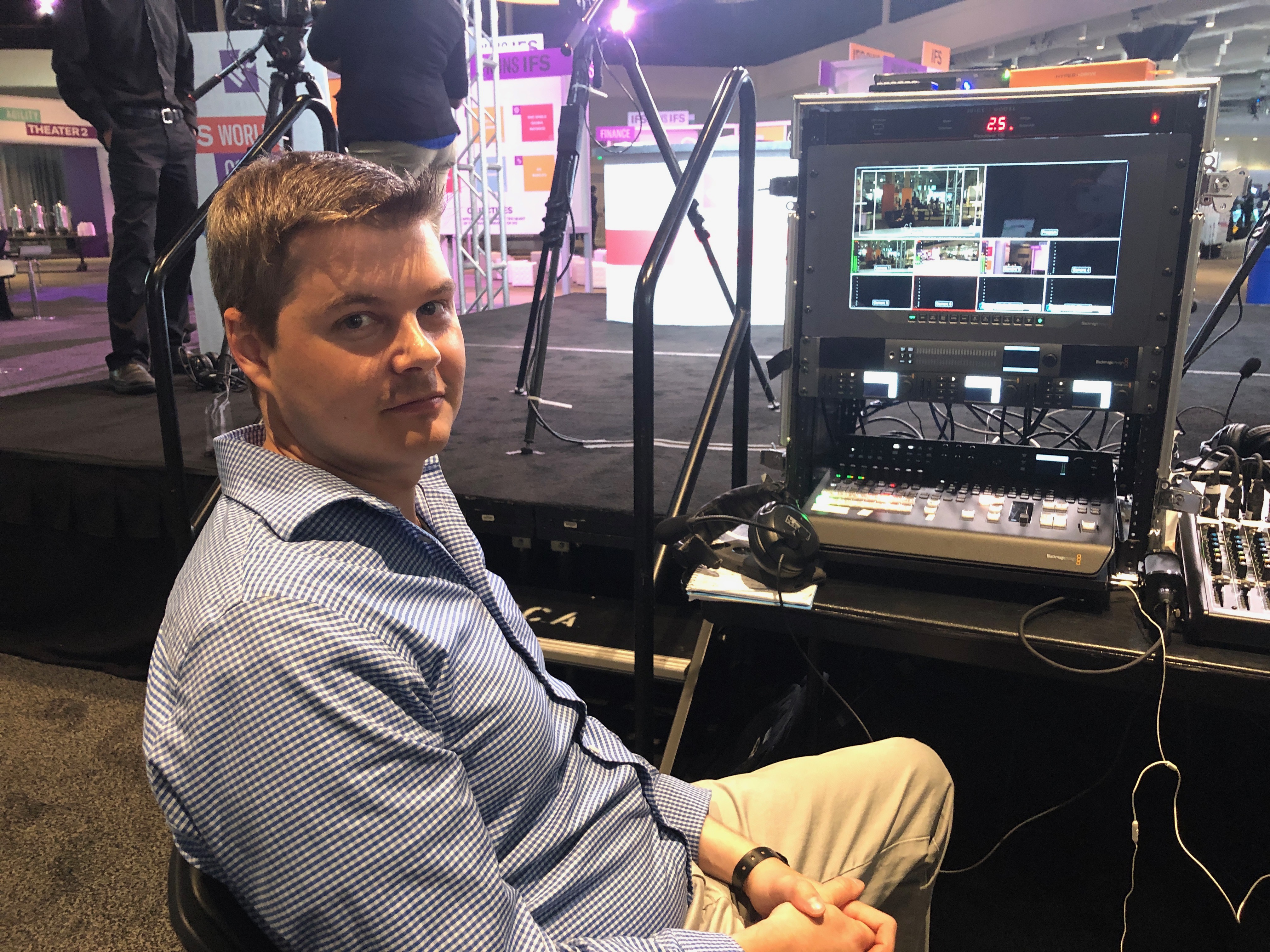
Josh Carver is in charge of the whole production. As producer and director for DigiNovations. Josh leaves nothing to chance. He meticulously reviews the rundown, checks camera shots and tests audio quality. It’s this attention to detail that Josh demands of himself and a level of attention that clients can’t do on their own. “We’ve been battle tested again and again. “
“15 seconds to open.”
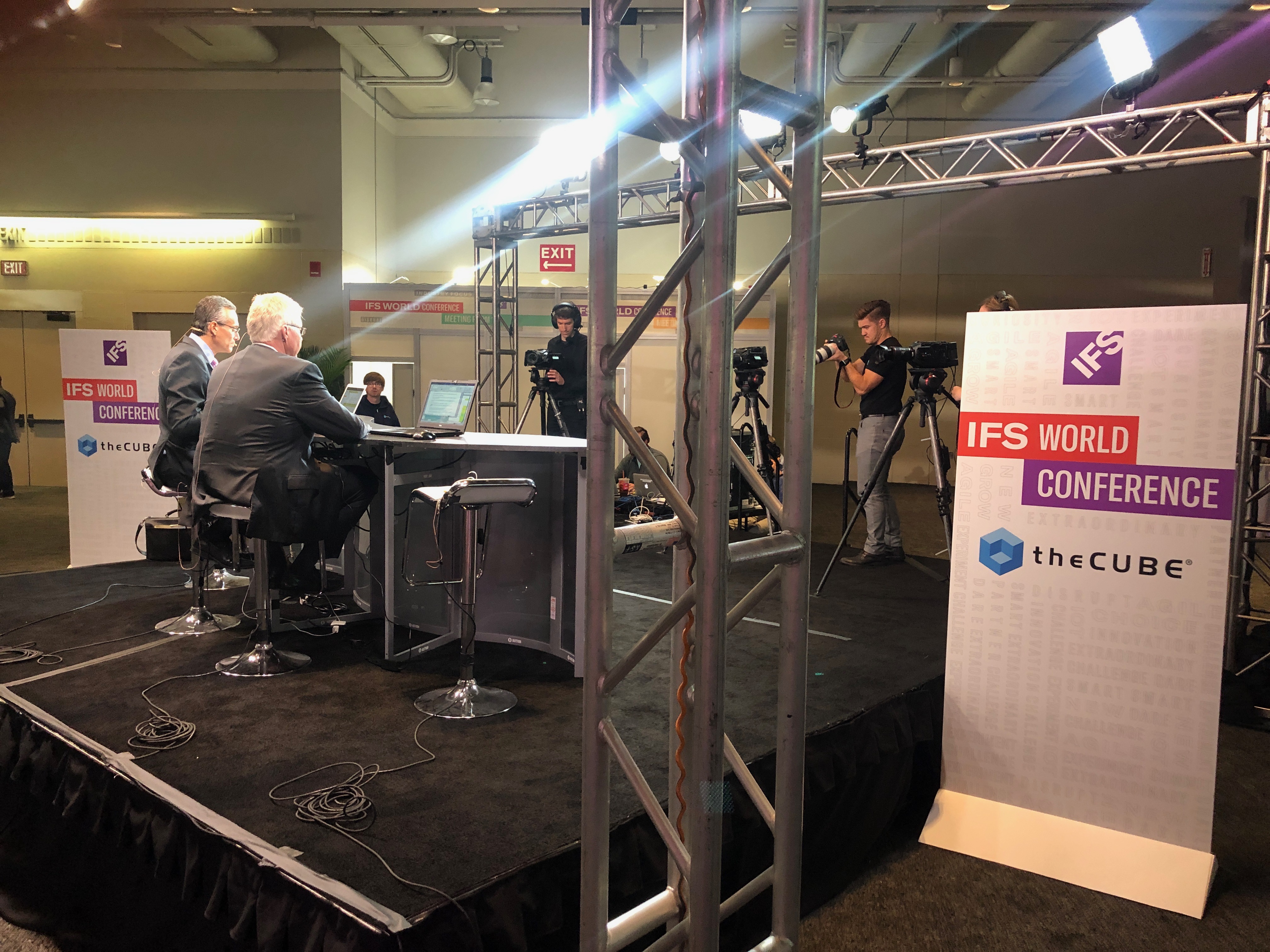
On this day the client is SiliconANGLE Media, a digital media leader which produces theCUBE, an online program that live streams events like the IFS conference and helps companies elevate their brand messaging.
“The importance of live streaming is being able to get the information out there in real time, especially for what we do as an enterprise tech news provider,” says Brendon Rider, producer of theCUBE. “Being able to get the messages that these companies want to get across quickly and efficiently is the goal and I think live streaming really helps amplify the message and do it in a really effective way.”
“10…9….8…”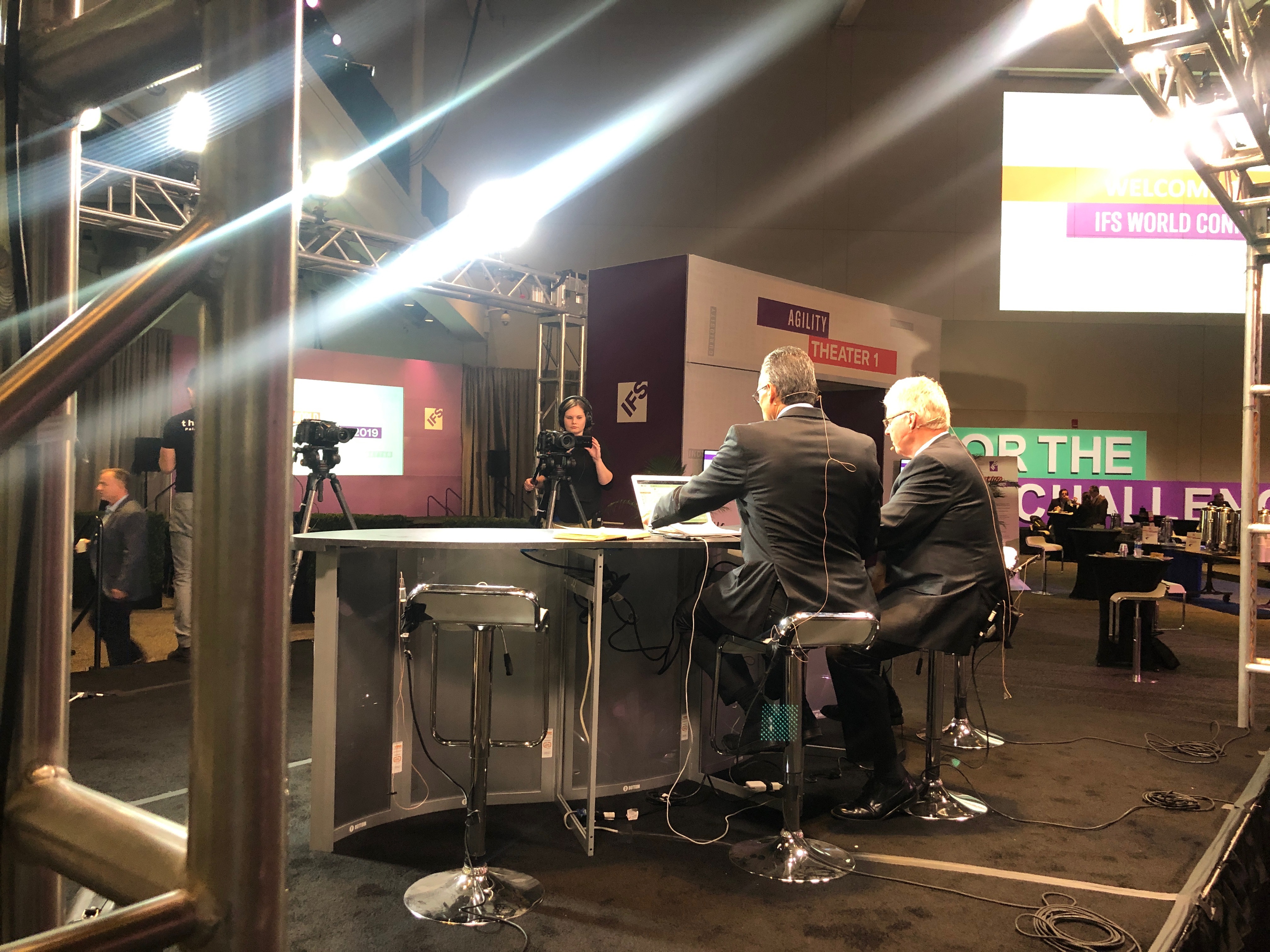
Over the course of this day, 12 segments will be live streamed flawlessly from the convention floor and then segmented onto theCUBE’s YouTube channel for on-demand viewing. But before the signal goes up to the worldwide audience, there is plenty of preparation, starting with a phone call from a potential client to DigiNovations. “We try to find out their needs, their budget and work within those boundaries,” says Carver. “The lead time for this event was probably 2-3 months. We found the more time for pre-production, the better quality the visuals will be.”
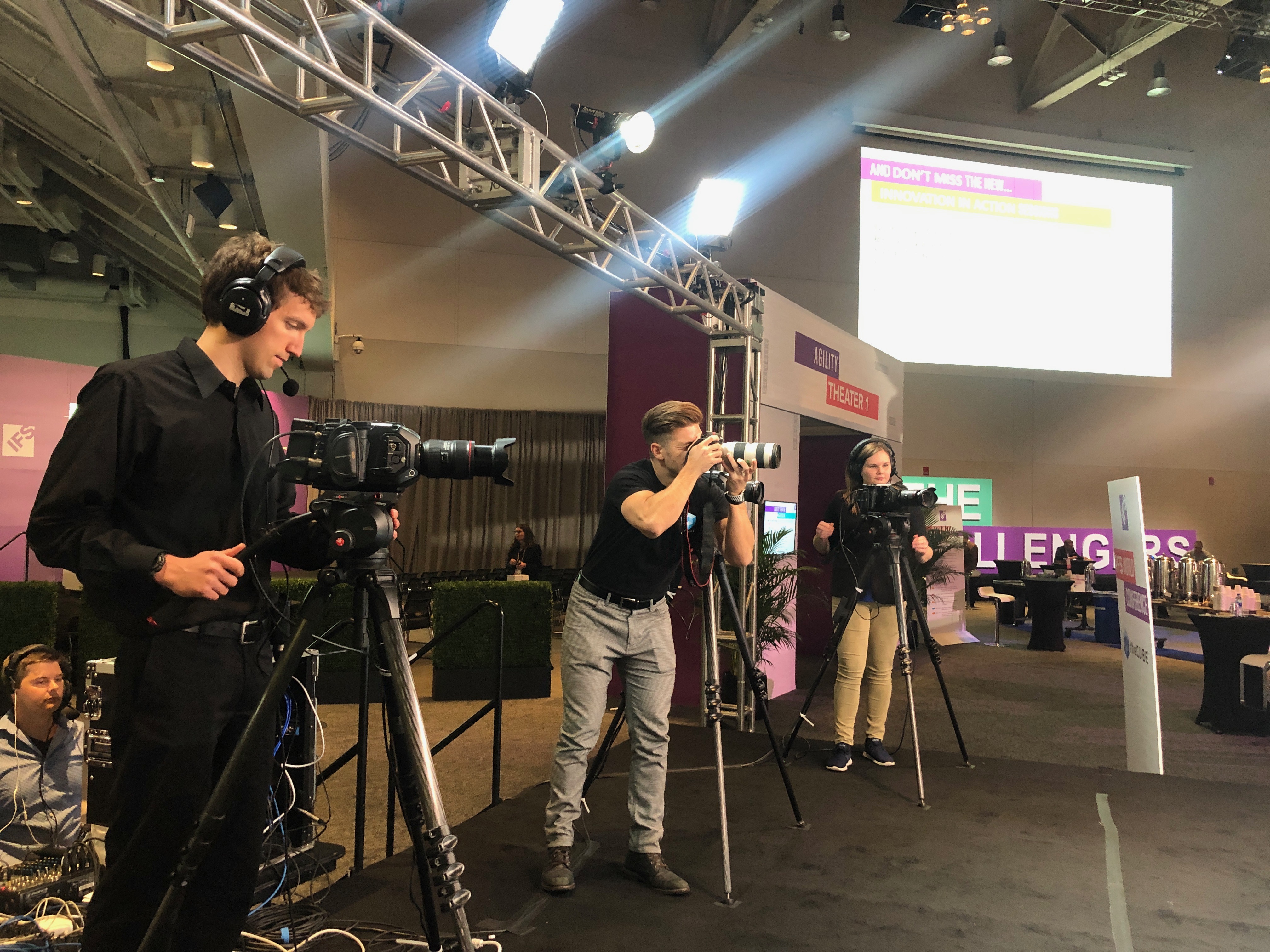
On stage are two videographers from DigiNovations, Ben Donahue and Nicole Albee, who do more than just frame shots. They’re the closest eyes to the live conversation on the news set and they’re always on the lookout for better ways to make the live stream shine. “The lighting is important for surface separation,” says Donahue. “If there’s a busy background you have to have them standout, it looks better to add definition to their faces.”
The excitement is building and the team knows that a lot of eyes will be watching. But they have their eyes wide open too. “We have so many eyes on what we are doing which is what makes us top notch,” says Albee. “We have three different people watching the live stream, watching for imperfections, listening for audio. We have Ben and myself watching and making sure everything we’re capturing is in focus, the shot looks nice and we spend a lot of time making sure our backgrounds look good and represent the quality and excitement of the arena we’re filming in.”
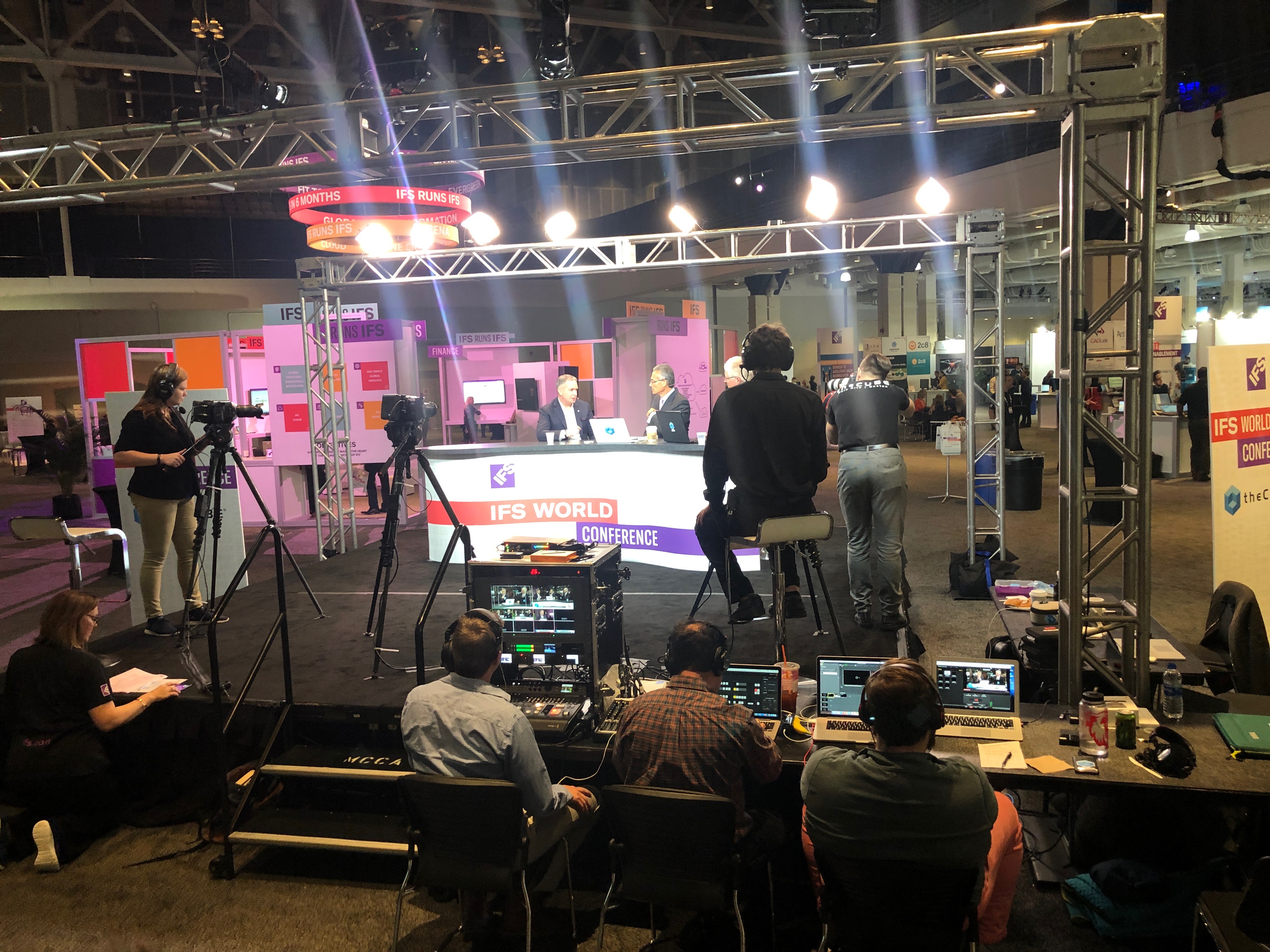
Challenges
Companies that try to live stream with an in-house team often learn the hard way of the challenges that lie in the weeds. One challenge is with the load in, the tight period of time you have to transfer gear into a venue. Some locations are union venues that work with specific rules. Someone needs to coordinate and work with people overseeing the union to accomplish tasks like hanging lights on a truss.
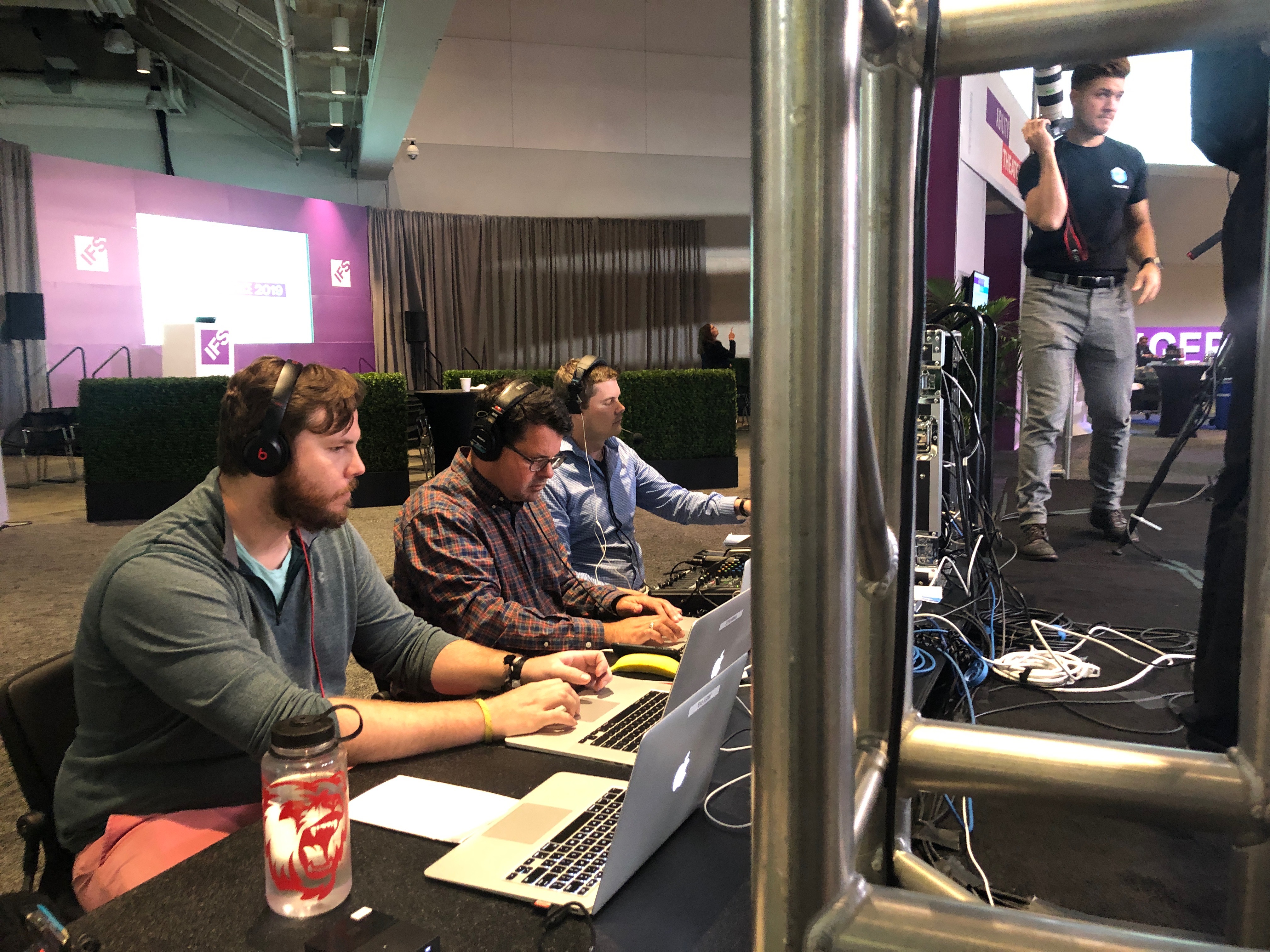
“It takes a lot of communication, a lot of double checks and a lot of coordination, says Chuck Scott, DigiNovations’ Production Manager. “We’re working with theCUBE, we have to confer with IFS, we have to confer with Hynes Convention Center so there are a lot of moving targets. On our end, Josh did a great job and now it’s focusing on getting a good show and having communication.”
Other challenges run the gamut, from weak Internet connections to making sure you have a secure network. More challenges arise from the live environment, says theCUBE’s Rider, whether it’s a “voice-of-God” beaming from the loud speakers overhead a convention floor to audio feedback from all the invisible wires stored in the walls. “Being able to be dynamic in a live environment is really important and I think that’s something DigiNovations provides in spades,” adds Rider.
When theCUBE was looking for a production company to live stream this global conference, it found the right partner. “We were looking for a very professional, efficient crew which is what DigiNovations provides,” says Rider. “I’ve worked with Josh on three shows and all three times, it’s been really easy. They just make things both fun and seamless. They adapted to our process and our workflow really well and its something our company appreciates and really values, so anytime we have East Coast shows, it’s great to know we have them here to support us.”
Overcoming Challenges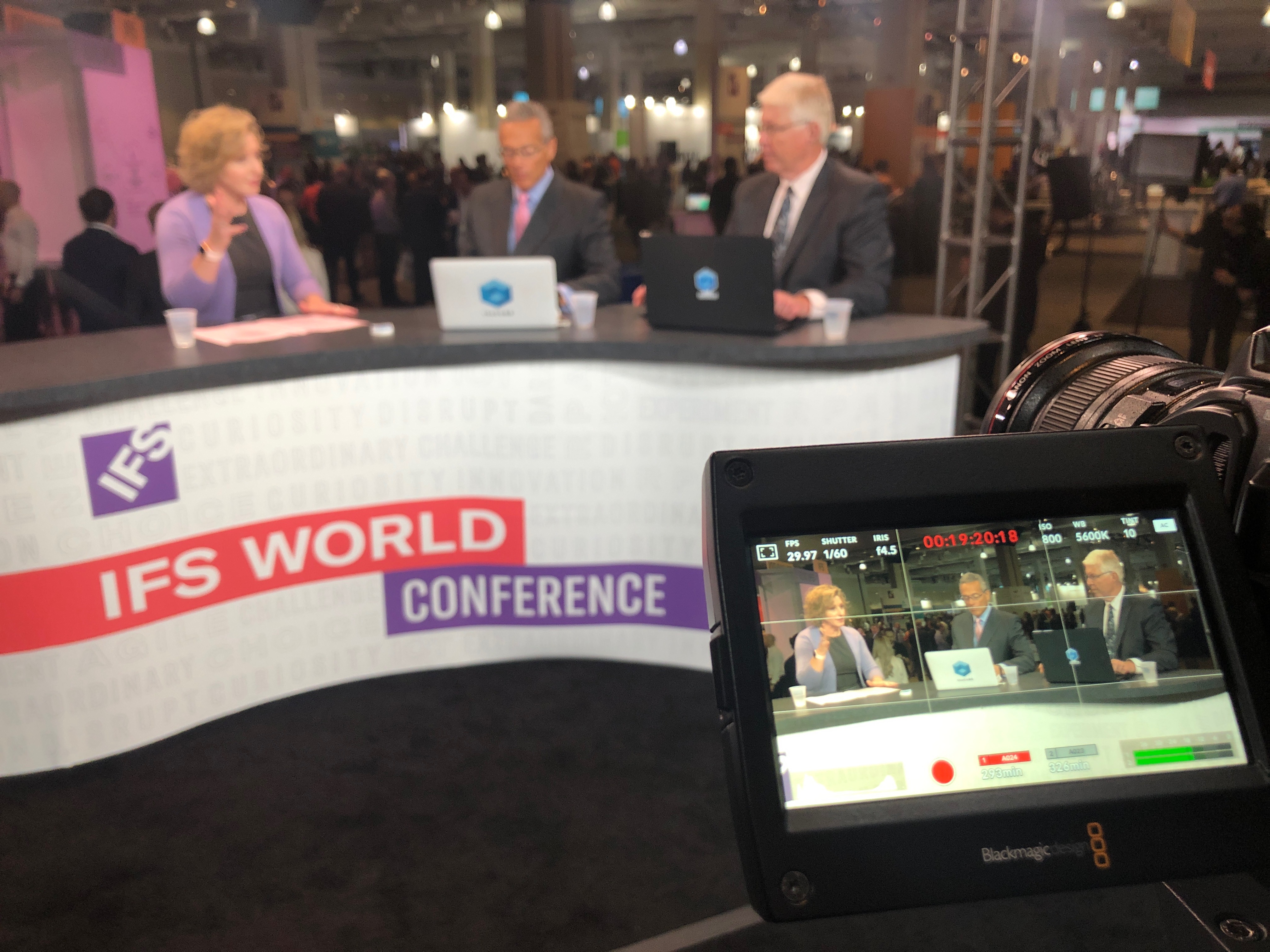
Staying ahead of the challenges is what the team at DigiNovations does so well. They plan thoroughly so there are fewer surprises on the set where most of the difficulties can arise, like an incompatible microphone or a malfunctioning IFB earpiece.
DigiNovations has perfected live event streaming, from convention floors to school graduations to live musical performances. Whatever the event, live streaming bridges the world. “We bring the world to them,“ says Carver. “There’s no better way to be here without having to get on a plane, buy a hotel room and navigate a new city. The world becomes smaller and smaller with live streaming.”
When the live stream ends, the work of sharing the event continues. “Every single segment we do, we will then segment it out and push it to their social media sites so there are a lot of opportunities to generate lots of content in a short amount of time,” adds Carver.
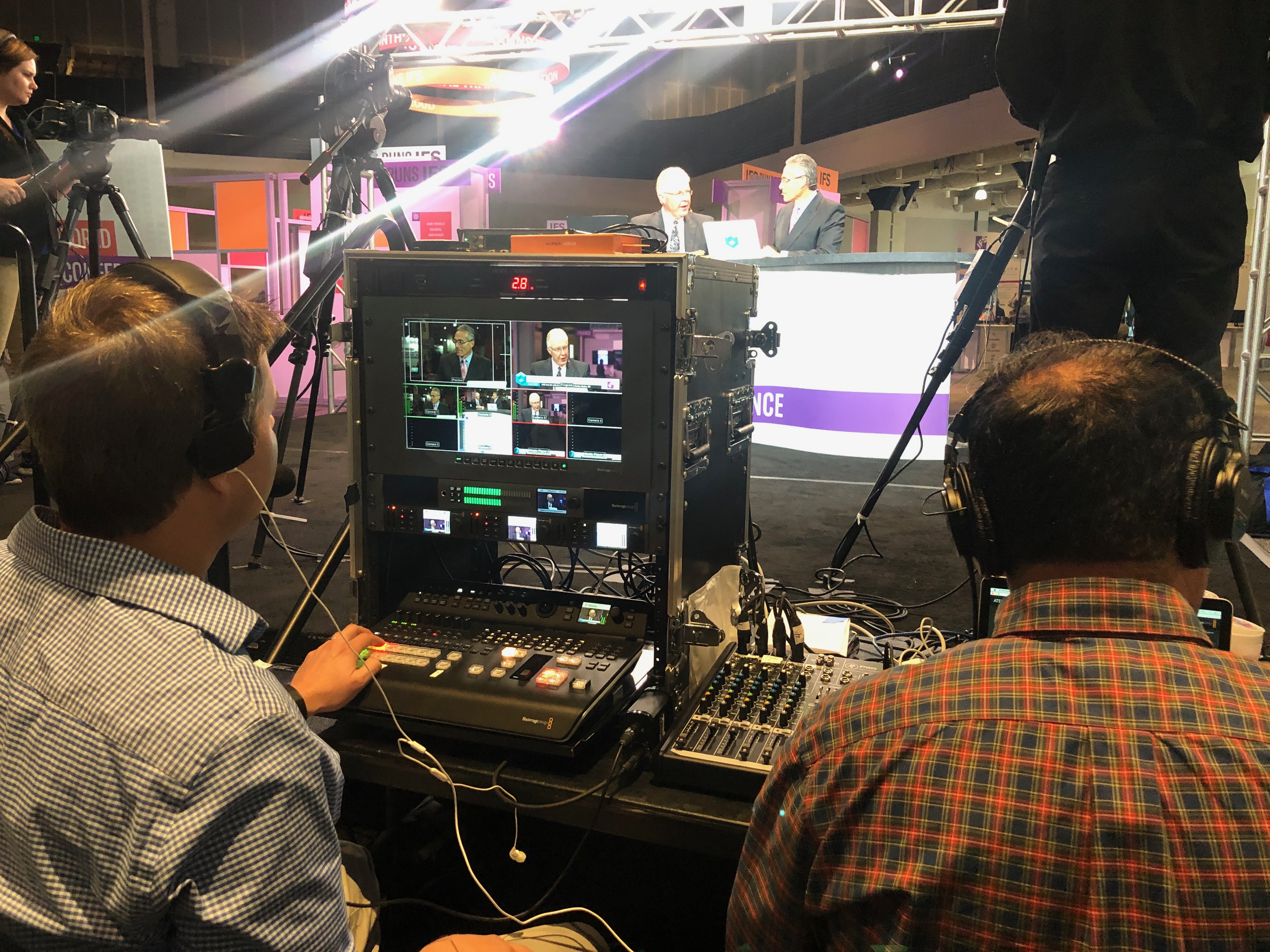 “7…6…5…”
“7…6…5…”
As we get close to going live, the pressure builds, but so does the excitement. “It’s a lot of fun,” says James Donald, Executive Producer at DigiNovations. “There’s a major energy in the room at all times on a shoot because everyone is ready for something good to happen.”
“4….3….2…1…”
Client interaction is key to a successful live stream and the team at DigiNovations does everything in its power to differentiate. Clients take notice. “We’ve worked with a bunch of different companies in my time here,” says Alex Myerson who runs the Boston studio for SiliconANGLE Media. “And DigiNovations is by far the most reliable. This is a high stress job so when you’re working with someone reliable, a crew that you know and are familiar with, it makes it go from being productive to a fun environment.”
“Live from Boston covering IFS, we’re back at IFS World 2019, you’re watching theCUBE, a leader in high tech coverage.”
In this day of Facebook Live and cell cameras everywhere, it’s easy to think companies can save money and have the in-house skill to pull off a live event stream on its own. But Myerson has a cautionary tale. “Don’t go for the cheapest solution. While you can get a closest studio off and running with a $100 purchase off of Amazon, it pays to have someone come by and help set up your production.”
A live stream is only successful if it meets the expectations of a client. “We always try to make the client, or whoever’s on stage, feel at home, feel at ease and just communicate to them that we’re here to support them,” says Carver. “We’re here to make them look good. They don’t have to worry about, ‘oh, am I going to come off as an idiot’ or always looking at makeup or hair. Part of our job is to make them look good.”


